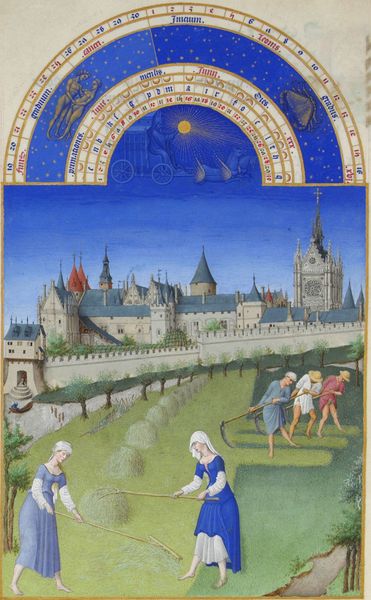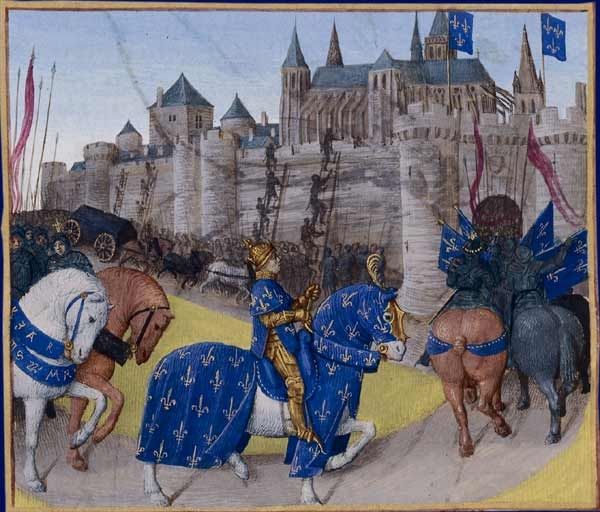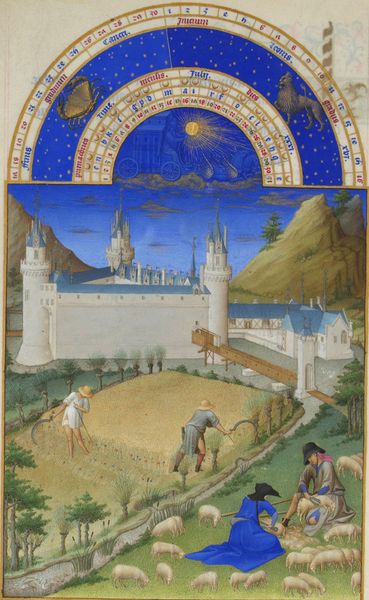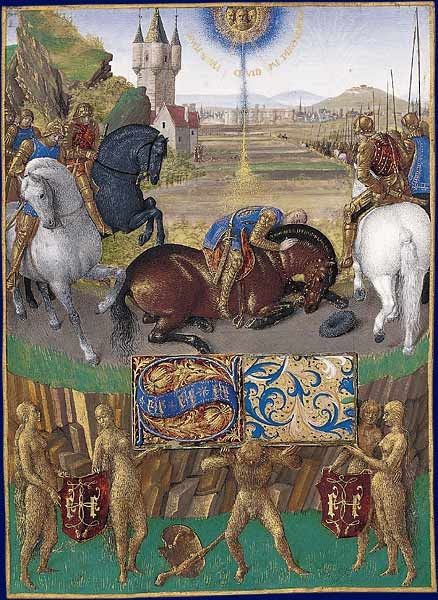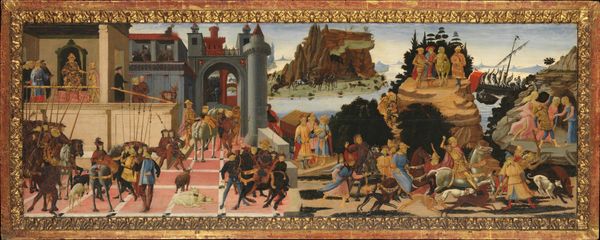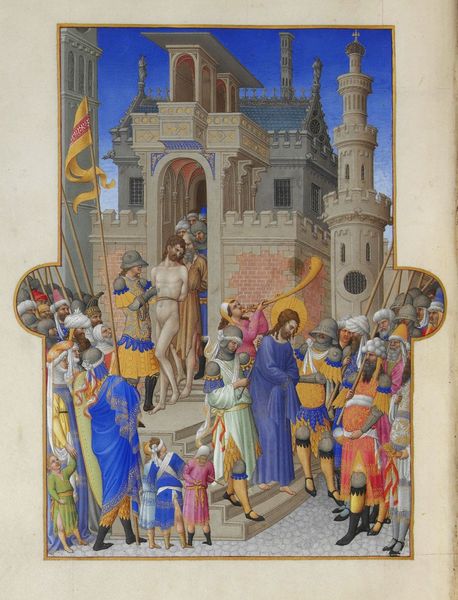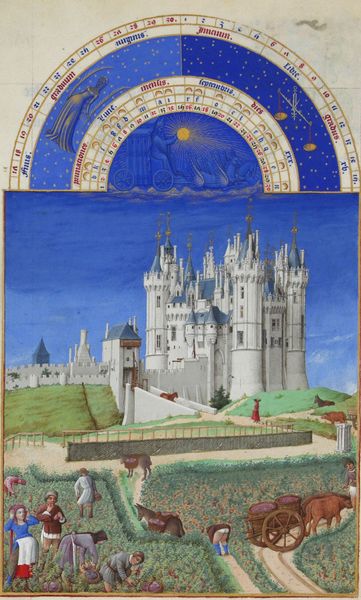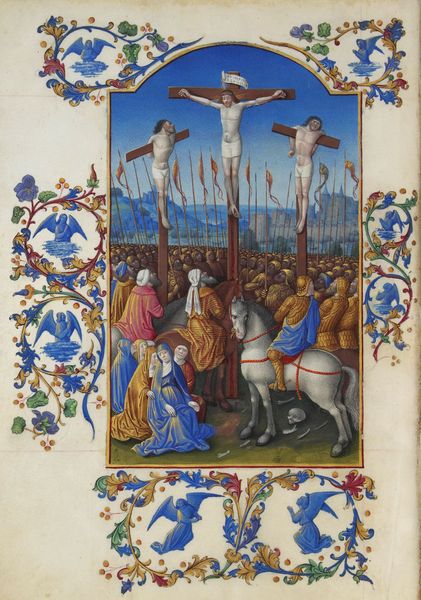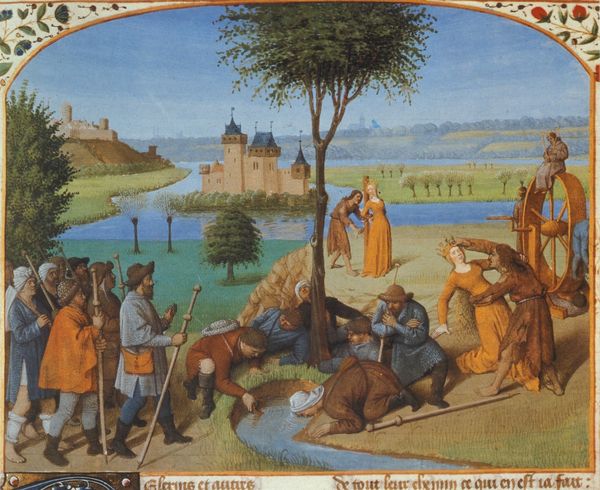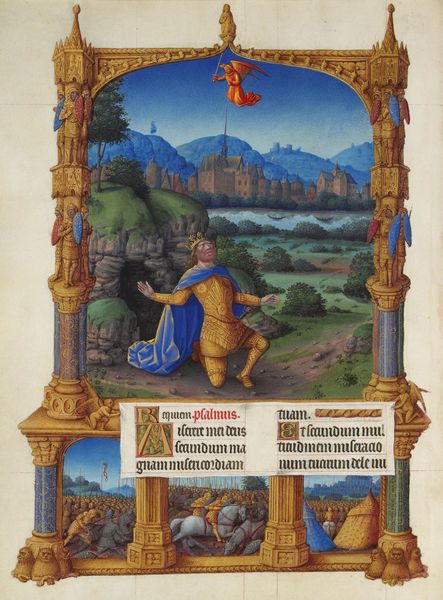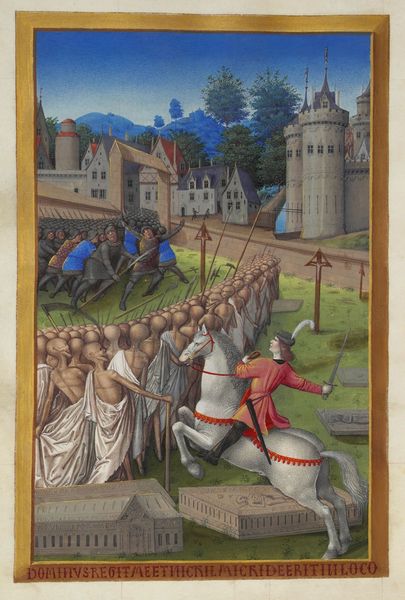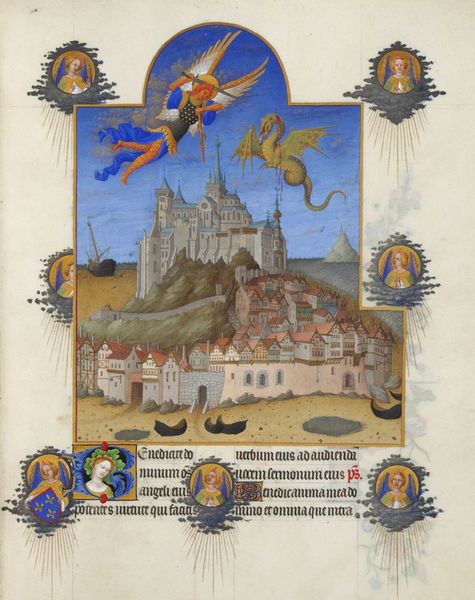
tempera, painting
#
medieval
#
narrative-art
#
tempera
#
painting
#
landscape
#
naive art
#
mood board
#
genre-painting
#
international-gothic
#
mixed media
#
miniature
Copyright: Public domain
The Limbourg brothers painted this "Calendar" around the early 15th century, using tempera, gold leaf, and ink on vellum. Each panel is a tableau, each framed beneath an arch of celestial symbols. Here, the zodiac signs are not mere astronomical markers; they are deeply embedded with the earthly rhythms of medieval life. Consider the recurring motif of labor, so vividly captured in each month’s activities. We see feasts and plowing, harvests and hunts, each task meticulously rendered and connected to the rhythm of the seasons. These labors are gestures of continuity, echoing the ancient Roman agricultural calendars, the *Fasti*, where seasonal tasks were also carefully aligned with the movements of the stars. The image of plowing, for example, recurs across millennia. We can trace it back to ancient Egyptian tomb paintings, where the turning of the soil symbolized renewal and rebirth. In this calendar, the plow is less a tool and more a primal connection to the earth, embodying the cyclical nature of life and the eternal return of the seasons. These images touch upon the collective memory of agrarian life. They resonate with an unconscious understanding of our place in the natural world, a powerful connection that transcends time.
Comments
No comments
Be the first to comment and join the conversation on the ultimate creative platform.
